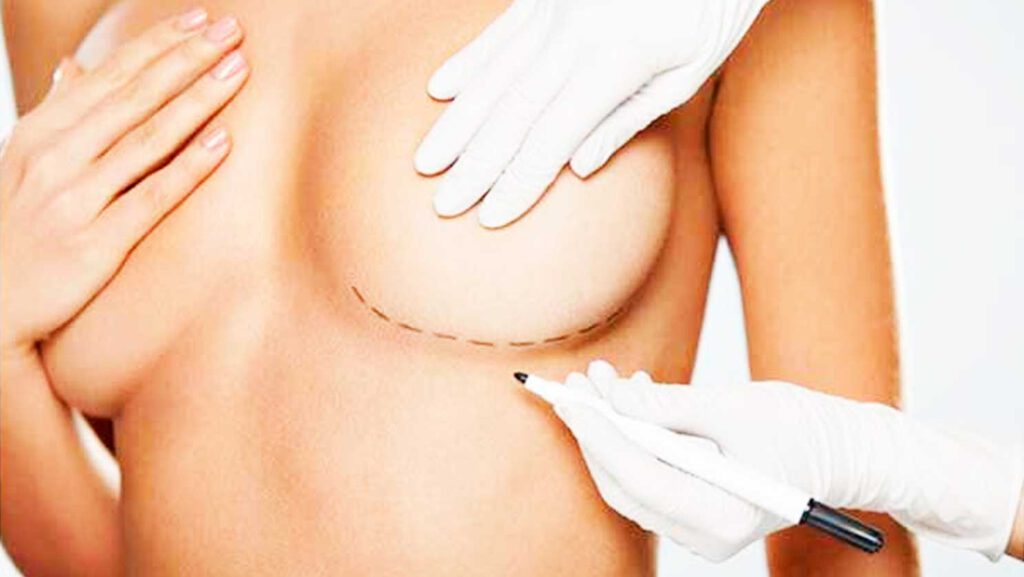
What is Mammoplasty?
Naturally large and voluminous breasts lead to health problems and a drop in self-esteem, affecting a woman’s life.
The consequences of breast excess range from: pain in the shoulders, neck, spine, and deep bra marks. They also interfere in the daily routine. Simple things like exercising and choosing clothes end up becoming a nuisance. The main causes of excessive breast volume are genetics and hormonal stimuli.
Flaccidity, on the other hand, is caused by aging, accentuated weight loss, and breast-feeding.
Recommending mammoplasty
The mammoplasty is recommended to reduce the mammary volume, to correct the shape and the flaccidity of the breasts. The surgery should preferably be performed after full development of the breasts, which generally occurs at the end of puberty.
It is important to point out that each person has a different glandular and hormonal development.
The ideal moment to perform the surgery will be recommended by your doctor.
Breast Anatomy
The breasts are located above the pectoral muscles of the woman. They are composed of glandular tissue and ducts responsible for the production and conduction of milk. Around the glandular tissue, there is the fatty tissue and ligaments that are responsible for filling and supporting the breasts.
This very important structure in the female body can suffer changes with age, hormonal variation, pregnancy, weight gain and loss, accidents, and diseases.
Pre-surgical recommendations
Schedule your daily and social life in the days following the surgery, respecting the necessary precautions.
It is important that you are in good health to undergo the surgery. During the medical appointment, a complete physical evaluation is done, and laboratory tests are requested. Some recommendations must be followed before the surgery.
Inform your doctor about the medications you normally take, because some of them must be suspended, as is the case with anticoagulants.
In the days before the surgery, it is advisable to stop drinking alcoholic beverages and smoking. Inform your Doctor if you have flu and indisposition before the surgery.You must go on 8 hours of absolute fasting , no solid foods and liquids.
The time of the surgery and the type of anesthesia will be informed by your doctor.
The return to normal activities and work takes a few days. Other specific recommendations, regarding dressing care, healing, sun exposure, and sports activities, will be given by your Doctor according to your case. Patience and care are fundamental in the post-operative period.
After a few months, you will be able to see a more natural and definitive result. Complications are rare, due to the preoperative preparation and the care offered during and after the surgery.
Plastic surgery is one of the ways to gain more self-confidence and improve your quality of life.
Talk about your expectations with your doctor and see what can really be done in your case, because perfection doesn’t exist, but the results are worth it. Together you can discuss the existing surgical techniques and the most suitable ones for you, because the anatomy of each person must always be respected.
There is no plastic surgery without scars, each person has a different healing process, which does not depend on the doctor but on the organism. You should seek the best result within your reality, without expecting to look like someone famous or someone you admire.
Surgery technique
We will now show how a mammoplasty is performed. The choice of the surgical technique adopted takes into account the size and degree of flaccidity of the breasts. The incision can be around the areola, and can extend to the central portion of the lower pole of the breast. Or, as in most cases, it can encompass almost the entire lower pole. In this technique, an incision is made around the areola to reposition it and reduce its size, if necessary. The skin of the new areola site and the lower pole of the breast is removed. Next, the excess glandular and fatty tissue of the breast is removed, reducing the breast volume. In cases of drooping, breast reshaping is performed. The areola is elevated and the incisions are brought closer together, resulting in a vertical scar and another horizontal scar in the breast crease.
To remove the excess fat on the sides of the thorax, liposuction can be associated with the surgery. A small drain can also be placed, helping in the recovery. This drain will be removed in the days following the surgery. In cases where you want to correct flaccidity and enlarge the breasts, it is possible to place a breast prosthesis, followed by the removal of the excess skin and repositioning of the areola. Because the incisions are made in the lower part of the breast, the patient can wear necklines and bikinis without fear of showing the scar. As time goes by, the scars will mature and become less visible. The healing process can take up to a few months.
The reduction in breast volume and the correction of flaccidity, has many benefits. Although there are some scars, whose size and shape depend on each case.
Pre-surgical recommendations
It is very important to wear a surgical bra, because it supports the breasts during the healing process. The patient must also avoid lifting her arms and sleeping on her breasts. Other specific recommendations, such as: healing, dressings, and sports activities, will be given by your doctor.
We take care of every detail in your medical trip
Medical Travel Package
Includes transfers from and to:
Airport + Hotel + Clinic + Hospital
Hotel or SPA post surgery
Exclusive Concierge Service
Highly qualified medical team
